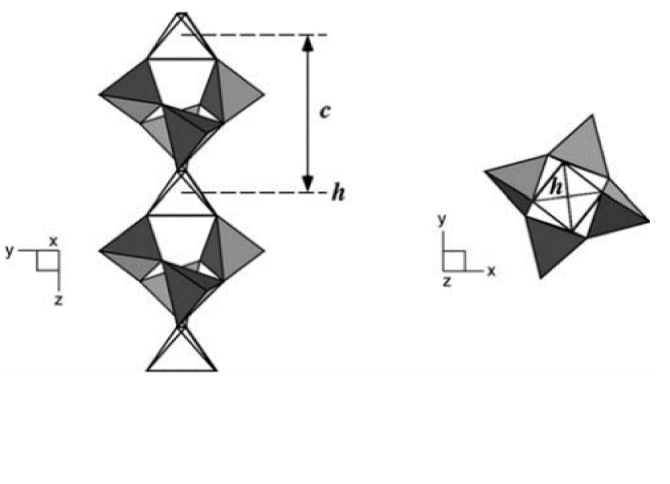"Anisotropic compression of edingtonite and thomsonite to 6 GPa at room temperature"
- Authors
Y. Lee, J.A. Hriljac, A. Studer, T. Vogt
- Journal
Physics and Chemistry of Minerals
Vol.31, No.1, pp.22-27, 2004.02 - DOI
Abstract
Polycrystalline samples of natural edingtonite (New Brunswick, Canada) and thomsonite (Oregon, USA) were studied up to 6 GPa using monochromatic synchrotron X-ray powder diffraction and a diamond-anvil cell with a methanol:ethanol:water mixture as a penetrating pressure-transmitting fluid. Unlike natrolite, previously studied under the same conditions, edingtonite and thomsonite do not show any apparent pressure-induced hydration (PIH) or phase transitions. All these fibrous zeolites are characterized by their anisotropic compressibilities, with the linear compressibilities of the fibrous chains (c-axis) being as small as one third of those perpendicular to the chains (a-, b-axes); for edingtonite, β0 a=0.0050(3) GPa−1, β0 b=0.0054(2) GPa−1, β0 c=0.0034(1) GPa−1; for thomsonite, β0 a= 0.0080(2) GPa−1, β0 b=0.0084(2) GPa−1, β0 c=0.0032(1) GPa−1. The pressure–volume data were fitted to a second-order Birch–Murnaghan equation of state using a fixed pressure derivative of 4. As a result of the 0000-type connectivity of the chains, the bulk modulus of edingtonite is found to be about 40% larger than that of thomsonite; KEDI 0=73(3) GPa, KTHO 0=52(1) GPa. Distance least-squares refinements were used to model the expected framework, following the observed linear compression behaviors. The chain-bridging T–O–T angle is proposed to be correlated with the different compressibilities across the chains in each framework type.












